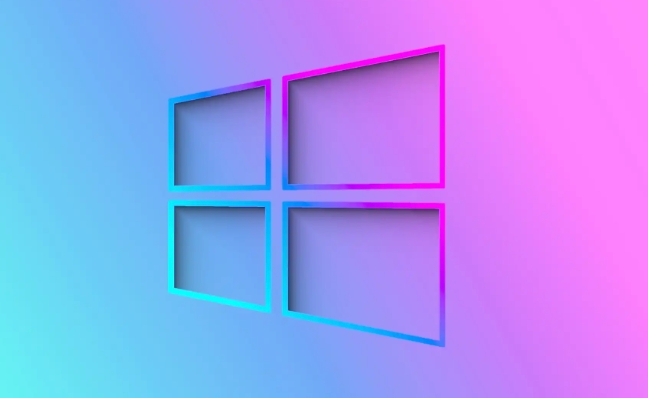To enable Telnet Client in Windows, use one of the following methods: 1) Open Control Panel, go to Programs > Programs and Features, click Turn Windows features on or off, check Telnet Client, then click OK; 2) Open Command Prompt as Administrator and run dism /online /Enable-Feature /FeatureName:TelnetClient; 3) Open PowerShell as Administrator and run Enable-WindowsOptionalFeature -Online -FeatureName TelnetClient. After enabling, test by running telnet google.com 80 in Command Prompt, and if the connection succeeds, the screen will go blank or show a blinking cursor. Note that Telnet transmits data in plain text, so it should not be used for sensitive tasks on untrusted networks.

Enabling the Telnet Client in Windows is a straightforward process, but it's not turned on by default. Telnet can be useful for testing network connectivity to specific ports or managing network devices. Here’s how to enable it on Windows 10, Windows 11, and Windows Server.

Method 1: Using Control Panel
- Open Control Panel (you can search for it in the Start menu).
- Click on Programs > Programs and Features.
- On the left side, click Turn Windows features on or off.
- In the pop-up window, scroll down and check the box next to Telnet Client.
- Click OK.
- Wait a moment while Windows enables the feature. You may need to restart your computer (though this is rare).
Once enabled, you can use telnet from Command Prompt or PowerShell.
Method 2: Using Command Line (Admin)
If you prefer using the command line, you can enable Telnet via DISM (Deployment Image Servicing and Management):

-
Open Command Prompt as Administrator:
- Press
Win Xand choose Command Prompt (Admin) or Windows Terminal (Admin).
- Press
-
Type the following command and press Enter:

dism /online /Enable-Feature /FeatureName:TelnetClient
Wait for the confirmation message that the operation completed successfully.
Now you can run telnet commands without any issues.
Method 3: Using PowerShell (Admin)
Alternatively, use PowerShell:
Open PowerShell as Administrator.
Run this command:
Enable-WindowsOptionalFeature -Online -FeatureName TelnetClient
Press Enter and wait for the success message.
How to Test Telnet After Enabling
To verify it’s working, open Command Prompt and try connecting to a server on a common port, like port 80:
telnet google.com 80
If the screen goes blank or you see a blinking cursor, the connection succeeded. If you get an error, the host might be blocking the connection or the port is closed.
?? Note: Telnet transmits data (including passwords) in plain text, so avoid using it for sensitive tasks on untrusted networks.
That’s it—Telnet Client is now enabled and ready to use. Basically just a few clicks or a single command, but it’s often overlooked when troubleshooting network issues.
The above is the detailed content of How to enable Telnet Client in Windows. For more information, please follow other related articles on the PHP Chinese website!

Hot AI Tools

Undress AI Tool
Undress images for free

Undresser.AI Undress
AI-powered app for creating realistic nude photos

AI Clothes Remover
Online AI tool for removing clothes from photos.

Clothoff.io
AI clothes remover

Video Face Swap
Swap faces in any video effortlessly with our completely free AI face swap tool!

Hot Article

Hot Tools

Notepad++7.3.1
Easy-to-use and free code editor

SublimeText3 Chinese version
Chinese version, very easy to use

Zend Studio 13.0.1
Powerful PHP integrated development environment

Dreamweaver CS6
Visual web development tools

SublimeText3 Mac version
God-level code editing software (SublimeText3)
 How to change the system display language for all users in Windows
Jul 31, 2025 am 08:18 AM
How to change the system display language for all users in Windows
Jul 31, 2025 am 08:18 AM
InstallthedesiredlanguagepackviaSettings→Time&Language→Language®ion,ensuring"SetasmyWindowsdisplaylanguage"isselected.2.Changethesystemdisplaylanguageinthesamemenuandrestart.3.OpenControlPanel→Region→Administrativetab,click"
 How to reset the Microsoft Store in Windows
Jul 31, 2025 am 08:23 AM
How to reset the Microsoft Store in Windows
Jul 31, 2025 am 08:23 AM
ResettheMicrosoftStoreviaSettingsbygoingtoApps>Installedapps,selectingMicrosoftStore,clickingAdvancedoptions,thenRepairandResetifneeded.2.Ifthatfails,re-registertheStoreusingPowerShellasadminwiththecommand:Get-AppXPackage-NameMicrosoft.WindowsStor
 How to reset the TCP/IP stack in Windows
Aug 02, 2025 pm 01:25 PM
How to reset the TCP/IP stack in Windows
Aug 02, 2025 pm 01:25 PM
ToresolvenetworkconnectivityissuesinWindows,resettheTCP/IPstackbyfirstopeningCommandPromptasAdministrator,thenrunningthecommandnetshintipreset,andfinallyrestartingyourcomputertoapplychanges;ifissuespersist,optionallyrunnetshwinsockresetandrebootagain
 How to install Windows on a Mac without Boot Camp
Jul 31, 2025 am 11:58 AM
How to install Windows on a Mac without Boot Camp
Jul 31, 2025 am 11:58 AM
Without BootCamp, installing Windows on Mac is feasible and works for different chips and needs. 1. First check compatibility: The M1/M2 chip Mac cannot use BootCamp, it is recommended to use virtualization tools; the Intel chip Mac can manually create a boot USB disk and install it in partition. 2. Recommended to use virtual machines (VMs) for M1 and above chip users: Windows ISO files, virtualization software (such as ParallelsDesktop or UTM), at least 64GB of free space, and reasonably allocate resources. 3. IntelMac users can manually install it by booting the USB drive: USB drive, WindowsISO, DiskU is required
 Step-by-step guide to installing Windows from an ISO file
Aug 01, 2025 am 01:10 AM
Step-by-step guide to installing Windows from an ISO file
Aug 01, 2025 am 01:10 AM
DownloadtheWindowsISOfromMicrosoft’sofficialsite.2.CreateabootableUSBusingMediaCreationToolorRufuswithaUSBdriveofatleast8GB.3.BootfromtheUSBbyaccessingthebootmenuoradjustingBIOS/UEFIsettings.4.InstallWindowsbyselectingcustominstallation,choosingtheco
 A guide to custom Windows installation options
Aug 01, 2025 am 04:48 AM
A guide to custom Windows installation options
Aug 01, 2025 am 04:48 AM
Choose"Custom:InstallWindowsonly(advanced)"forfullcontrol,asitallowsacleaninstallthatremovesoldissuesandoptimizesperformance.2.Duringsetup,managepartitionsbydeletingoldones(afterbackingupdata),creatingnewpartitions,formatting(usingNTFS),ors
 How to install Windows on a Mac
Jul 31, 2025 am 10:07 AM
How to install Windows on a Mac
Jul 31, 2025 am 10:07 AM
ForIntel-basedMacs,useBootCampAssistanttocreateadual-bootsystemwithWindowsbypreparingaUSBdrive,downloadingaWindowsISO,partitioningthedisk,andinstallingWindowsalongsidemacOSwithsupportdrivers.2.ForAppleSiliconMacs(M1/M2/M3),usevirtualizationsoftwareli
 How to manage AppLocker policies in Windows
Aug 02, 2025 am 12:13 AM
How to manage AppLocker policies in Windows
Aug 02, 2025 am 12:13 AM
EnableAppLockerviaGroupPolicybyopeninggpedit.msc,navigatingtoApplicationControlPolicies,creatingdefaultrules,andconfiguringruletypes;2.Createcustomrulesusingpublisher,path,orhashconditions,preferringpublisherrulesforsecurityandflexibility;3.Testrules







